
Scholarly Literature
This is a database of scholarly literature that concentrates currently on natural and engineered selfish genetic elements (gene drives). The latest are shown here.
Disclaimer>

|
Gene drive and resilience through renewal with next generation Cleave and Rescue selfish genetic elementsOberhofer, G., T. Ivy and B. A. Hay, bioRxiv, 2019:2019.2012.2013.876169. 2019.
Gene drive-based strategies for modifying populations face the problem that genes encoding cargo and the drive mechanism are subject to separation, mutational inactivation, and loss of efficacy. Resilience, an ability to respond to these eventualities in ways that restore ... Keywords: Aedes aegypti, optimal control, wolbachia |

|
A bacterial gene-drive system efficiently edits and inactivates a high copy number antibiotic resistance locusValderrama, J. A., S. S. Kulkarni, V. Nizet and E. Bier, Nature Communications, 10:5726. 2019.
Gene-drive systems in diploid organisms bias the inheritance of one allele over another. CRISPR-based gene-drive expresses a guide RNA (gRNA) into the genome at the site where the gRNA directs Cas9-mediated cleavage. In the presence of Cas9, the gRNA cassette and any linked cargo ... Keywords: Aedes aegypti, optimal control, wolbachia |
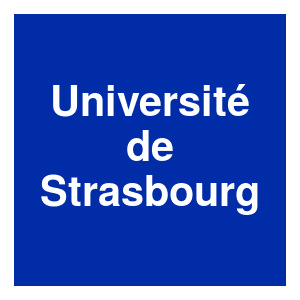
|
Development of genetic control strategies for insect pests using CRISPR/Cas9 Développement de méthodes de lutte génétique contre de l’insecte nuisible basé sur le system CRISPR/Cas9E. Green, Université de Strasbourg, 2019.
nsect pest control remains an important economic, environmental, and public health challenge. CRISPR/Cas9 gene drive (GD) is a novel genetic control strategy. GDs are genetic systems that can rapidly invade a population. This manuscript presents my efforts to develop gene drives ... Keywords: Aedes aegypti, optimal control, wolbachia |
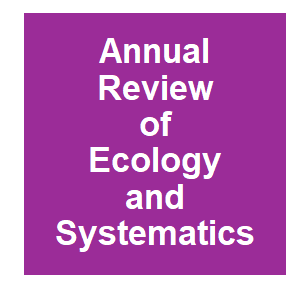
|
Genetic Control of MosquitoesAlphey, L., Annual Review of Entomology, 59:205-224. 2019.
Genetics can potentially provide new, species-specific, environmentally friendly methods for mosquito control. Genetic control strategies aim either to suppress target populations or to introduce a harm-reducing novel trait. Different approaches differ considerably in their ... Keywords: Aedes aegypti, optimal control, wolbachia |

|
Community Engagement Prior to a Small-Scale Pilot of the Sterile Insect Technique in Kwazulu-Natal, South Africa 2018P. N. Manana, J. Zikhali, D. Dlamini, S. Gumede, N. Mabaso, T. Mpungose and G. Munhenga, Journal of Public Health and Disease Prevention, 2. 2019.
Approximately 165 000 listeners were engaged during two 30 minute radio interviews at a local radio station. Two hundred and fifty farm workers, several outpatients from primary health care facilities and 1400 secondary school pupils were given education on malaria transmission ... Keywords: Aedes aegypti, optimal control, wolbachia |
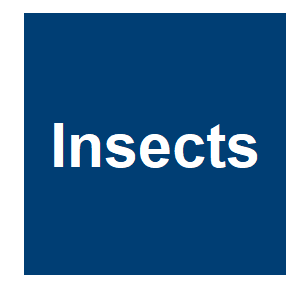
|
Mass-Rearing of Drosophila suzukii for Sterile Insect Technique Application: Evaluation of Two Oviposition SystemsF. Sassù, K. Nikolouli, S. Caravantes, G. Taret, R. Pereira, M. J. B. Vreysen, C. Stauffer and C. Cáceres, Insects, 10. 2019.
Drosophila suzukii (Diptera: Drosophilidae) is an invasive pest of a wide range of commercial soft-skinned fruits. To date, most management tactics are based on spraying of conventional and/or organic insecticides, baited traps, and netting exclusion. Interest has been expressed ... Keywords: Aedes aegypti, optimal control, wolbachia |

|
An Initial Framework for the Environmental Risk Assessment of Synthetic Biology-Derived Organisms with a Focus on Gene Drives.W. G. Landis, E. A. Brown and S. Eikenbary, Synthetic Biology 2020: Frontiers in Risk Analysis and Governance. Risk, Systems and Decisions., 2019.
We apply the structure of source-stressor-habitat-effect-impact pathway derived from the relative risk model (Landis and Wiegers 2005) and as was demonstrated to be applicable in the National Academy of Sciences, Engineering and Medicine (NASEM) 2016 report Gene Drives on the ... Keywords: Aedes aegypti, optimal control, wolbachia |

|
An X-linked meiotic drive allele has strong, recessive fitness costs in female Drosophila pseudoobscuraW. Larner, T. Price, L. Holman and N. Wedell, Proceedings of the Royal Society B-Biological Sciences, 286:9. 2019.
Selfish 'meiotic drive' alleles are transmitted to more than 50% of offspring, allowing them to rapidly invade populations even if they reduce the fitness of individuals carrying them. Theory predicts that drivers should either fix or go extinct, yet some drivers defy these ... Keywords: Aedes aegypti, optimal control, wolbachia |

|
Establishment of Wolbachia Strain wAlbB in Malaysian Populations of Aedes aegypti for Dengue ControlW. A. Nazni, A. A. Hoffmann, A. NoorAfizah, Y. L. Cheong, M. V. Mancini, N. Golding, G. M. R. Kamarul, M. A. K. Arif, H. Thohir, H. NurSyamimi, M. Z. ZatilAqmar, M. NurRuqqayah, A. NorSyazwani, A. Faiz, F.-R. M. N. Irfan, S. Rubaaini, N. Nuradila, N. M. N, Current Biology, 29:4241-4248.e5. 2019.
Dengue has enormous health impacts globally. A novel approach to decrease dengue incidence involves the introduction of Wolbachia endosymbionts that block dengue virus transmission into populations of the primary vector mosquito, Aedes aegypti. The wMel Wolbachia strain has ... Keywords: Aedes aegypti, optimal control, wolbachia |

|
The Competitive Mating of Irradiated Brown Marmorated Stink Bugs, Halyomorpha halys, for the Sterile Insect TechniqueD. M. Suckling, M. Cristofaro, G. Roselli, M. C. Levy, A. Cemmi, V. Mazzoni, L. D. Stringer, V. Zeni, C. Ioriatti and G. Anfora, Insects, 10. 2019.
The sterility of eggs and nymphs from gamma-irradiated male Halyomorpha halys was investigated to determine the potential for the sterile insect technique (SIT). Males irradiated at 0, 16, 24 and 32 Gy were placed with untreated virgin females, and egg sterility was determined, ... Keywords: Aedes aegypti, optimal control, wolbachia |
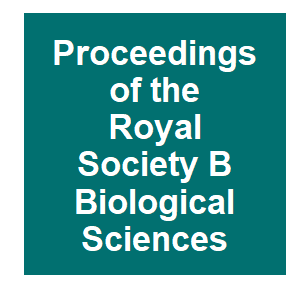
|
Effects of a male meiotic driver on male and female transcriptomes in the house mouseA. Lindholm, A. Sutter, S. Kunzel, D. Tautz and H. Rehrauer, Proceedings of the Royal Society B-Biological Sciences, 286:1-8. 2019.
Not all genetic loci follow Mendel's rules, and the evolutionary consequences of this are not yet fully known. Genomic conflict involving multiple loci is a likely outcome, as restoration of Mendelian inheritance patterns will be selected for, and sexual conflict may also arise ... Keywords: Aedes aegypti, optimal control, wolbachia |
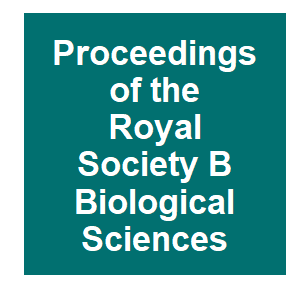
|
Rodent gene drives for conservation: opportunities and data needsJ. Godwin, M. Serr, K. Barnhill-Dilling, D. V. Blondel, P. R. Brown, K. Campbell, J. Delborne, A. L. Lloyd, K. P. Oh, T. A. A. Prowse, R. Saah and P. Thomas, Proceedings of the Royal Society B-Biological Sciences, 286:20191606. 2019.
Invasive rodents impact biodiversity, human health and food security worldwide. The biodiversity impacts are particularly significant on islands, which are the primary sites of vertebrate extinctions and where we are reaching the limits of current control technologies. Gene ... Keywords: Aedes aegypti, optimal control, wolbachia |
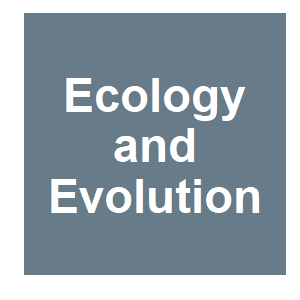
|
The impact of local population genetic background on the spread of the selfish element Medea-1 in red flour beetlesS. A. Cash, M. A. Robert, M. D. Lorenzen and F. Gould, Ecology and Evolution, 12:1-12. 2019.
Selfish genetic elements have been found in the genomes of many species, yet our understanding of their evolutionary dynamics is only partially understood. A number of distinct selfish Medea elements are naturally present in many populations of the red flour beetle (Tribolium ... Keywords: Aedes aegypti, optimal control, wolbachia |
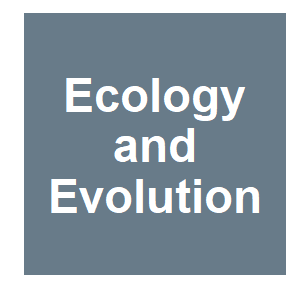
|
The distribution and spread of naturally occurring Medea selfish genetic elements in the United StatesS. A. Cash, M. D. Lorenzen and F. Gould, Ecology and Evolution, 9:14407–14416.. 2019.
Selfish genetic elements (SGEs) are DNA sequences that are transmitted to viable offspring in greater than Mendelian frequencies. Medea SGEs occur naturally in some populations of red flour beetle (Tribolium castaneum) and are expected to increase in frequency within populations ... Keywords: Aedes aegypti, optimal control, wolbachia |

|
Meiotic drive mechanisms: lessons from DrosophilaC. Courret, C.-H. Chang, K. H.-C. Wei, C. Montchamp-Moreau and A. M. Larracuente, Proceedings of the Royal Society B: Biological Sciences, 286:20191430. 2019.
Meiotic drivers are selfish genetic elements that bias their transmission into gametes, often to the detriment of the rest of the genome. The resulting intragenomic conflicts triggered by meiotic drive create evolutionary arms races and shape genome evolution. The phenomenon of ... Keywords: Aedes aegypti, optimal control, wolbachia |

|
Does meiotic drive alter male mate preference?S. R. Finnegan, L. Nitsche, M. Mondani, M. F. Camus, K. Fowler and A. Pomiankowski, Behavioral Ecology, 13:194-201. 2019.
Male mate preferences have been demonstrated across a range of species, including the Malaysian stalk-eyed fly, Teleopsis dalmanni. This species is subject to sex-ratio (SR), an X-linked male meiotic driver, which causes the dysfunction of Y-sperm and the production of all-female ... Keywords: Aedes aegypti, optimal control, wolbachia |

|
Fitness consequences of the selfish supergene Segregation DistorterH. W. S. Wong and L. Holman, Journal of Evolutionary Biology, 33:89-100. 2019.
Segregation distorters are selfish genetic elements that subvert Mendelian inheritance, often by destroying gametes that do not carry the distorter. Simple theoretical models predict that distorter alleles will either spread to fixation or stabilize at some high intermediate ... Keywords: Aedes aegypti, optimal control, wolbachia |

|
Evolutionary simulations of Z-linked suppression gene drivesL. Holman, Proceedings of the Royal Society B-Biological Sciences, 286:1-9. 2019.
Synthetic gene drives may soon be used to suppress or eliminate populations of disease vectors, pathogens, invasive species, and agricultural pests. Recent proposals have focused on using Z-linked gene drives to control species with ZW sex determination, which include ... Keywords: Aedes aegypti, optimal control, wolbachia |

|
Peri-Urban Community Attitudes towards Codling Moth Trapping and Suppression Using the Sterile Insect Technique in New ZealandG. Paterson, G. L. W. Perry, J. T. S. Walker and D. M. Suckling, Insects, 10. 2019.
New, more socially-acceptable technologies are being developed to suppress horticultural pests, because suppression is technically difficult with current technologies, especially in urban areas. One technique involves the release of sterile insects to prevent offspring in the ... Keywords: Aedes aegypti, optimal control, wolbachia |
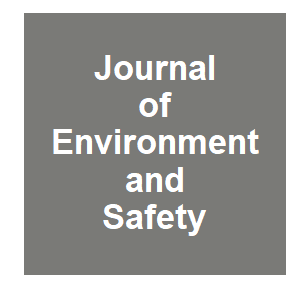
|
Efforts to enhance safety measures for CRISPR/Cas-based gene drive technology in JapanT. Tanaka, N. Tanaka, Y. Nagano, H. Kanuka, D. S. Yamamoto, N. Yamamoto, E. Nanba and T. Nishiuch, Journal of Environment and Safety, 2019.
Gene drive is a powerful system that can spread a desirable genetic trait into an entire species and/or population of a certain region, bypassing Mendelian rules of inheritance. Recently, one of the genome editing technologies, CRISPR/Cas, has been developed, making it easier to ... Keywords: Aedes aegypti, optimal control, wolbachia |

Contact
David O’Brochta
Foundation for the
National Institutes of Health
geneconvenevi@fnih.org
RSS

